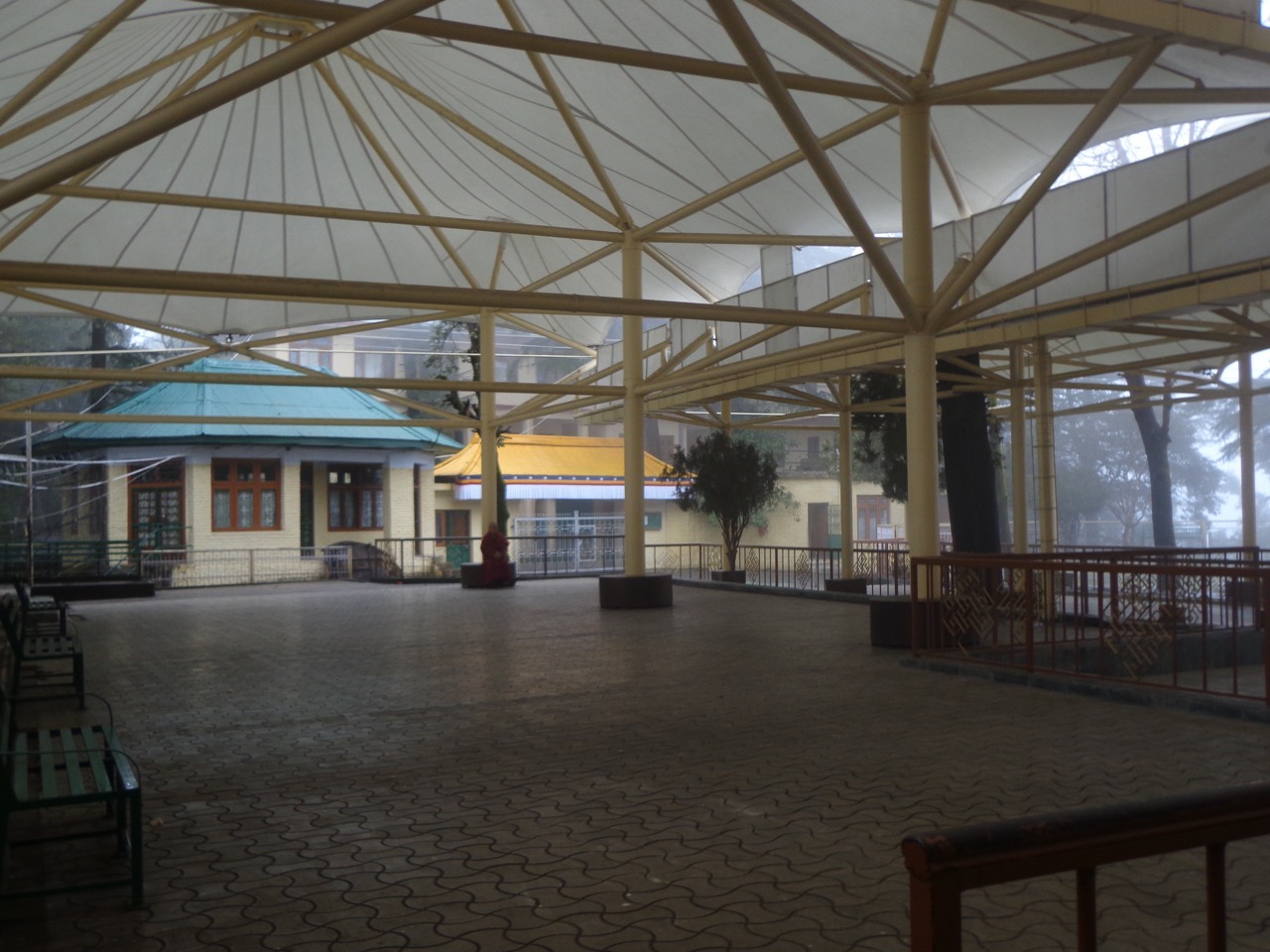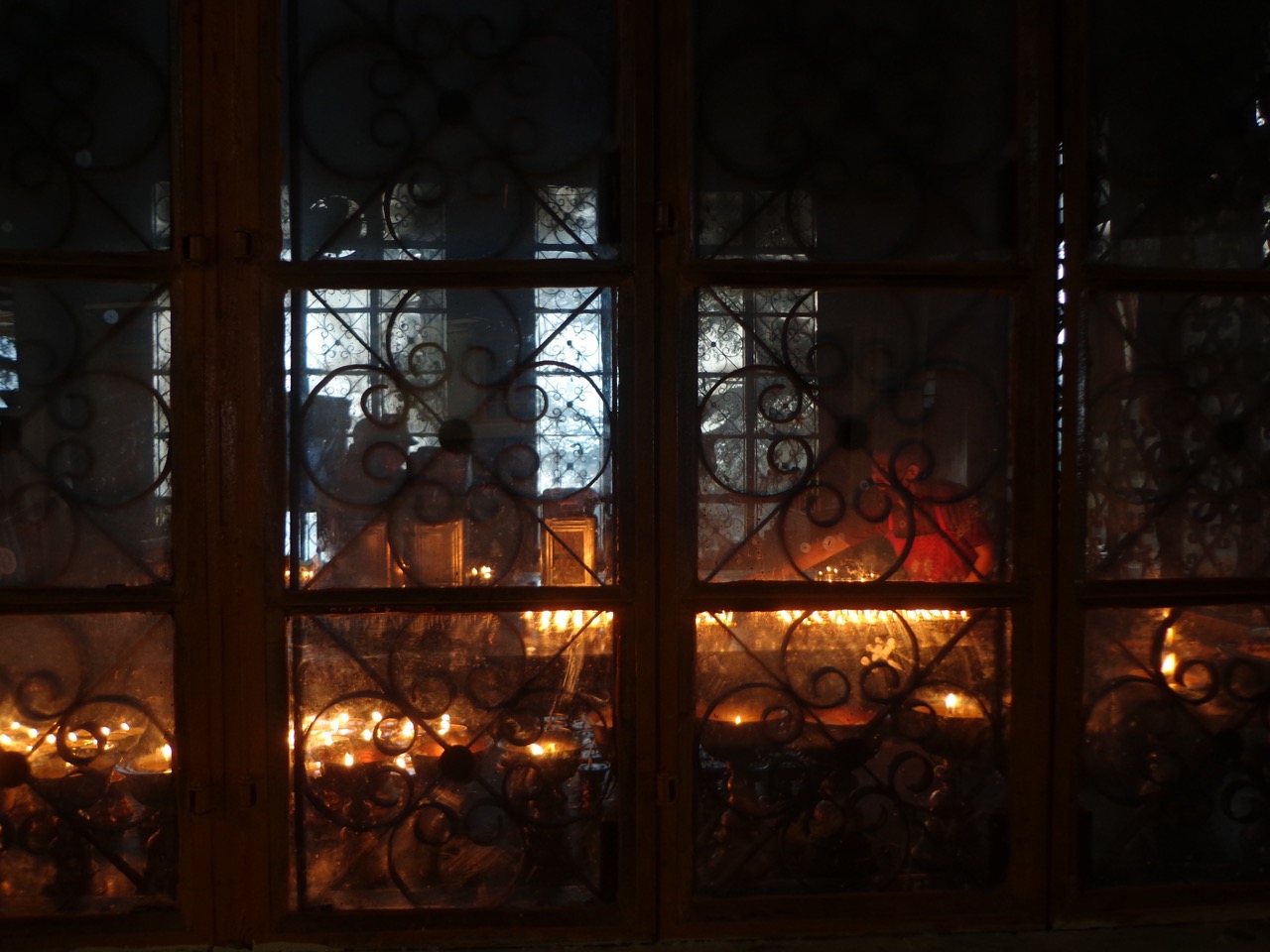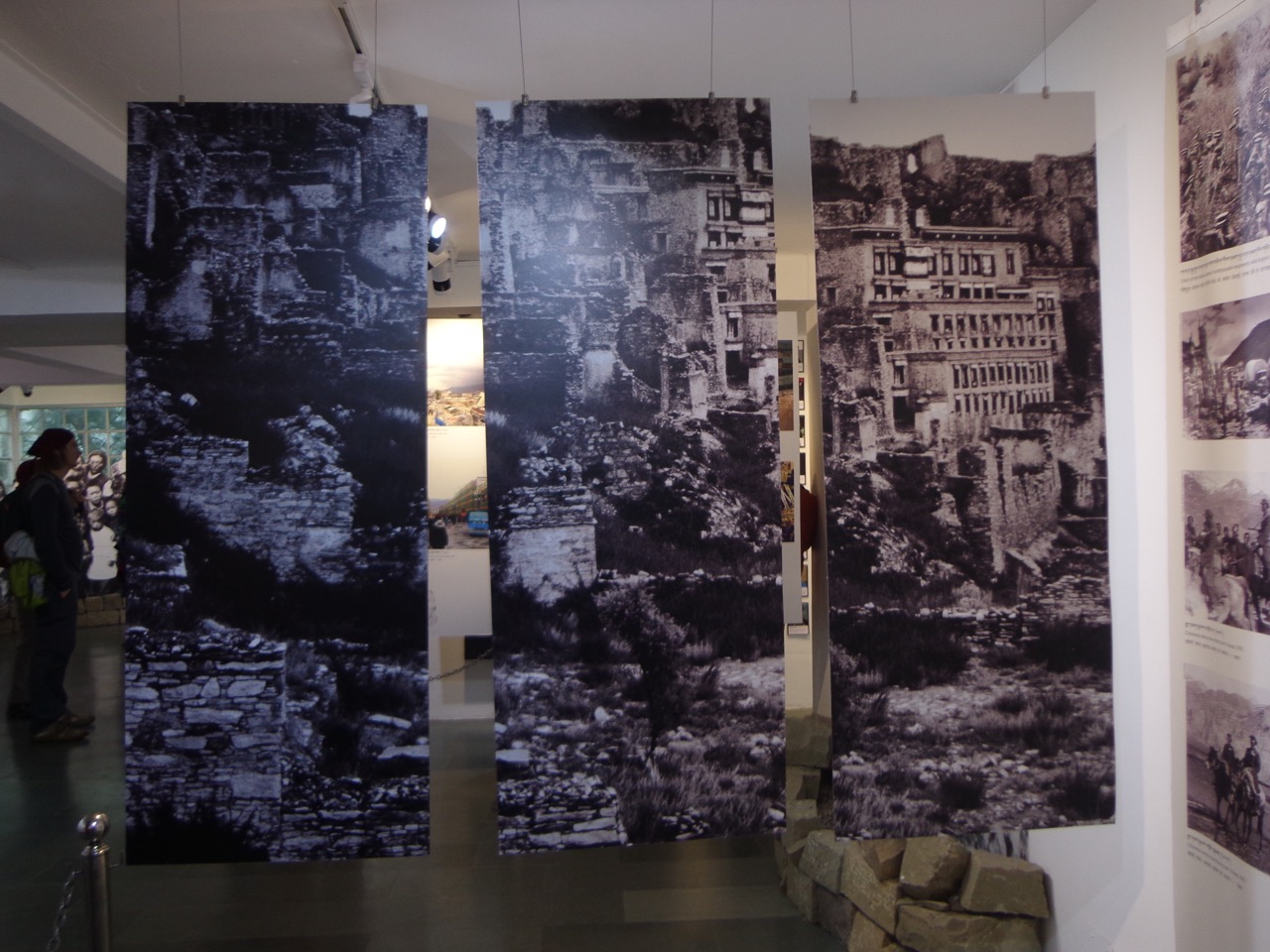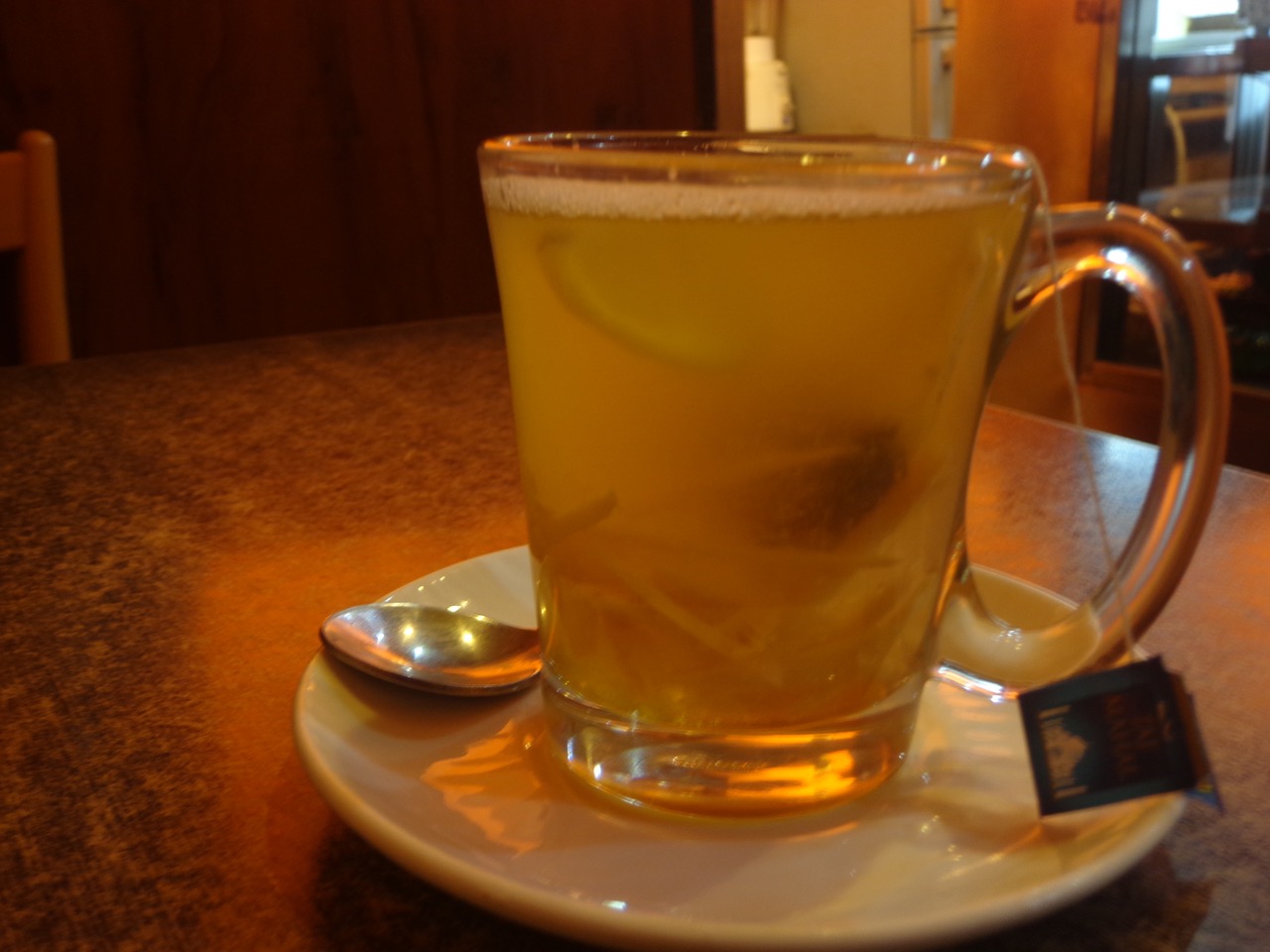It had rained quite heavily last night. In fact, it was raining cats and dogs at 8:00 am. The rain subsided at around 11:00 am. I had a quick lunch (or brunch) and decided to cover the vicinity of McLeod Ganj on foot.

Triund hilltop was covered in snow. It was sheer coincidence that I had timed my trek on the right day.
A small walk to Bhaksunag waterfalls
Bhaksunag waterfall is a very short (2 km) walk from McLeod Ganj. The road passes through the Bhaksunag temple. The rains had worsened the junction that leads to the temple. It was still better than our Whitefield roads in Bangalore.

Bhaksunag temple is mostly maintained by the donations from the army. Most of it has historically come from the various Gurkha regiments stationed in Dharamshala.
The waterfall is 700 metres from the temple. The entire trail is laid out very nicely with slate. I saw a woman in high-heels walking through the paved trail. It was surely idiotic and dangerous, especially after the rains.

There are many shacks that serve tea, eggs and Maggi. Here is one that did not spend too much time naming itself.
H.H. Dalai Lama’s temple and Tibetan Museum
While walking towards the temple, the entire place got covered in mist. Visibility was reduced to zero.
The temple is dedicated to preserving the teachings of a particular form of Buddhism that can be collectively known as Tibetan Tantric Buddhism. I got to know that specifically, there are four schools of thought, the details of which was difficult to grasp from the blurb on the Kalachakra and Vishvamata idol inside the temple.
Sadly, photography is prohibited in most areas – some to preserve spiritual sanctity and the others for security reasons.

The residence of Dalai Lama is partially visible through the courtyard. Photography of his residence is prohibited due to security reasons.
The Tibetan Museum is dedicated to China’s occupation of Tibet, the establishment of Tibet Autonomous Region and the suffering of its inhabitants.

Near the entrance is a memorial dedicated to the people who died during and after China’s occupation of Tibet.

A large number of Tibetan people have immolated themselves in protest of China’s cultural and political invasions.
St. John’s Church in the Wilderness
The mist had cleared up at 4:00 pm. The Sun was visible through the clouds. I walked through the market and took NH 503, the longer of the two roads of that leads to Dharamshala.
St. John’s Church is indeed in the wilderness. There is nothing else nearby. It was built in 1852 to serve the British troops and families stationed in Dharamshala.

The Church is the only structure in Dharamshala that survived the 1905 Kangra earthquake. Parts of it have been rebuilt, including the spire and the roof.

The memorial of James Bruce.
The temperatures had fallen significantly after the rains. There were two things that kept me warm throughout the day.
















